Planning to visit Olympic National Park in Washington State? Great choice! It’s a must-visit for anyone on a Pacific Northwest road trip.
You might be thinking the park is all about hiking and wildlife, but there are actually some really incredible things to do in Olympic National Park – whether you’re someone looking for an action-packed adventure or a place to find solace and silence.
You’ll be surrounded by the call of the rushing rivers, shimmering lakes, cascading waterfalls, rolling surf of the Pacific Ocean, and old-growth forests that whisper their secrets.
But if you’re not sure what attractions in Olympic National Park to add to your itinerary, don’t fret. As this guide will tell you everything you need to know!
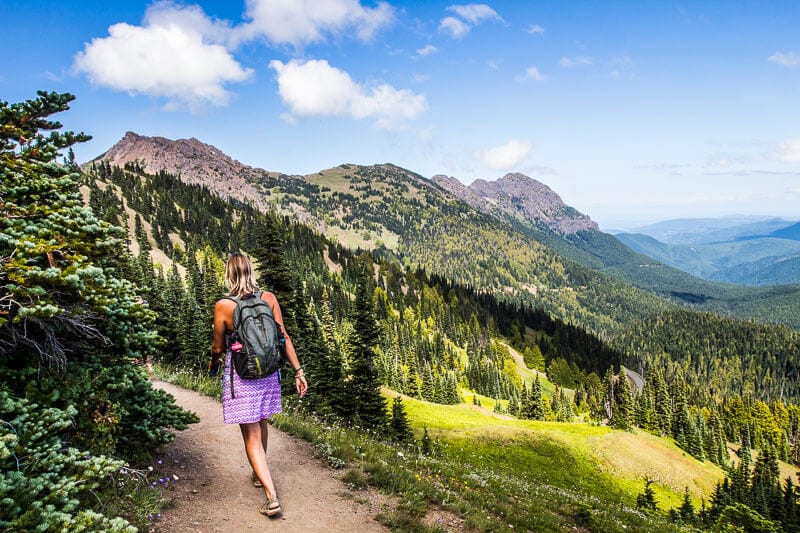
- Why Visit Olympic National Park?
- How to Visit Olympic National Park
- Getting to and around Olympic National Park
- Things to Do in Olympic National Park
- Watch our Video of the Olympic National Park
- Where to Stay in Olympic National Park
- Before You Go
- More Washington State Travel Tips
- Tips on More National Parks in the USA
Why Visit Olympic National Park?
Like all wilderness areas, Olympic National Park is a treasure you will take home in your heart – something you can draw upon in the years to come when the pace and noise of the urban setting get too overwhelming.
The solace and stillness of the wilderness can be found here.
Welcome to Olympic National Park, Washington, is a pristine region of ancient cedar spruce trees, glacial lakes, sub-alpine meadows, mountain ranges and verdant rainforests.
And Mount Olympus, at 7,980 feet, is the tallest and most prominent mountain on the Olympic Peninsula.
The Olympics were protected as a national park in 1938 and it is internationally recognized as a Biosphere Reserve and World Heritage Site, evidence of its diversity and rich resources. It’s one of the best national parks in the United States.
There are several different areas and places to visit in Olympic National Park found in different areas within the park boundaries. You’ll find everything from mountains, coasts, temperate rainforests, and lakes.
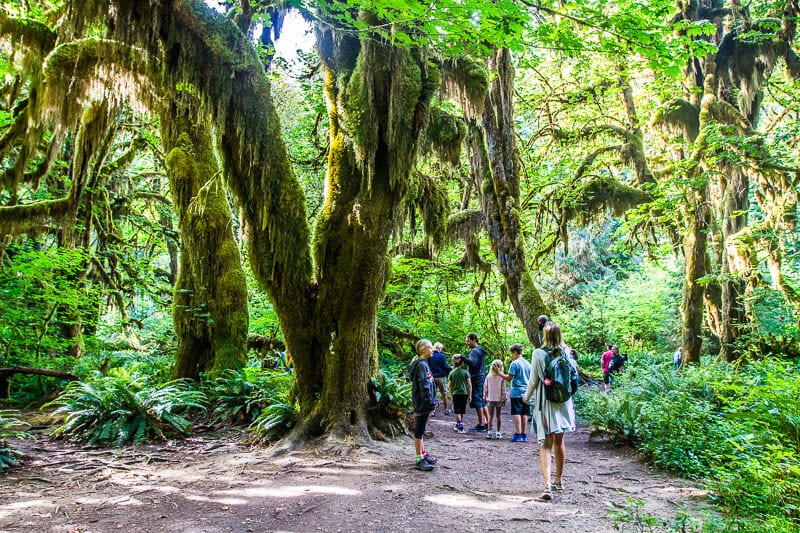
How to Visit Olympic National Park
You’ll need a National Park Permit to visit the different areas. You can purchase an America The Beautiful annual pass online, or a day passes at a local ranger station.
We were fortunate to have a local, Rob Taylor from 2 Travel Dads spent a day with us sharing his hidden secrets for the Olympic Peninsula or (OP) as they call it.
Rob’s local tips are mentioned throughout this guide, and in our Olympic National Park video down below.
You will need a car to visit Olympic National Park. If you don’t have your own vehicle, be sure to check out RentalCars.com to compare the prices of hire vehicles. You can also step your trip up a notch and rent an RV for a full camping experience using RVShare.
There are no through roads in the park due to the Olympic Mountains so it presents the challenge of driving in and out of the different sections.
Careful planning and a map are needed to ensure you visit the regions you most want to see. Highway 101 encircles the park and several spur roads lead to mountains, forest, and coast.
Note: with any travel adventure, we recommend you get travel insurance to protect your investment and give you peace of mind, just in case the unexpected happens.
We are ambassadors for Allianz Travel, and while our opinions are our own, this post was made possible thanks to their sponsorship! Check out their travel insurance policies here!
Getting to and around Olympic National Park
If you are flying in from out of state, most people will start their visit in Seattle.
By Car
Seattle to Olympic National Park is approximately 3 hour’s drive.
You can drive to Olympic National Park via the I-5 corridor or by one of the quieter state roadways.
Once you get to the Olympic Peninsula, connect to Hwy 101 to reach the visitor center at Port Angeles or any destinations in and around the park.
- From Olympia Take I-5 to Hwy 101
- From Tacoma Take State Route 16 to Bremerton; take State Route 3 north from Bremerton to State Route 104; be aware that State Route 104 crosses the Hood Canal Bridge Which Closes periodically for boat traffic.
- From Washington/Oregon Coast connect to Hwy 101 in Aberdeen.
By Ferry
You can catch the ferry (vehicles allowed) from Seattle over to the Olympic Peninsula and drive in from there.
Washington State Ferries has a number of routes that access the Olympic Peninsula via Puget Sound.
There are several port destinations that will get you across the sound and onto the peninsula and on your way to Olympic National Park.
- Arriving Port Townsend access Hwy 101 from State Route 20.
- Arriving Kingston access Hwy 101 from State Route 104.
- Arriving Bainbridge Island access Hwy 101 from State Routes 305, 7, and 104. Be aware that State Route 104 crosses the Hood Canal Bridge which closes periodically for boat traffic
Things to Do in Olympic National Park
Now you know why and how to visit Olympic NP, it’s time to take a look at the top Olympic National Park attractions.
We recommend at least three days exploring all the unique and best things to do in Olympic National Park, one of the coolest places to visit in Washington State.
Here are some suggestions for things to add to your itinerary!
1. Hike the Hurricane Ridge
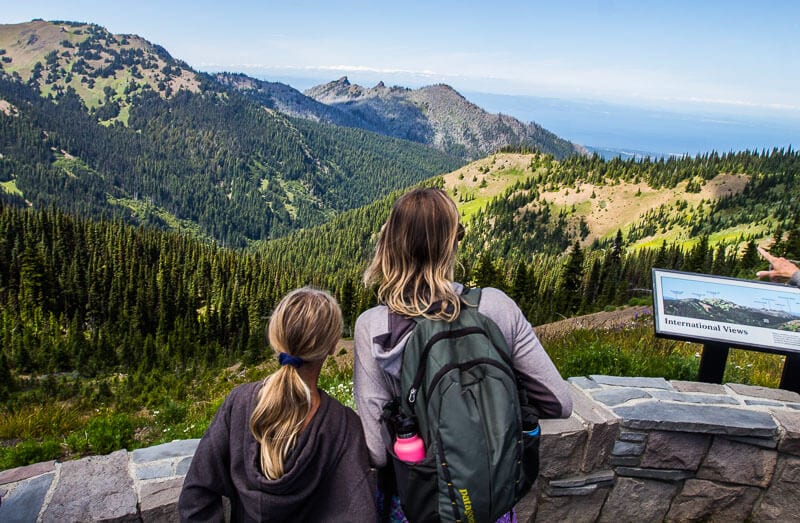
Time to strap on the pack and put on your hiking shoes for some seriously stunning Olympic National Park hikes!
Here is where you’ll find glacier-chiseled U-shaped valleys and sub-alpine meadows filled with singing marmots, friendly black-tailed deer, and vibrant wildflowers.
Hurricane Ridge is the most accessible Olympic mountain range in the park, located only 17 miles from Port Angeles, the largest town near Olympic NP.
There are multiple hiking trails you can take to enjoy those mountain views and Alp-like atmosphere.
2. Klahhane Ridge Trail
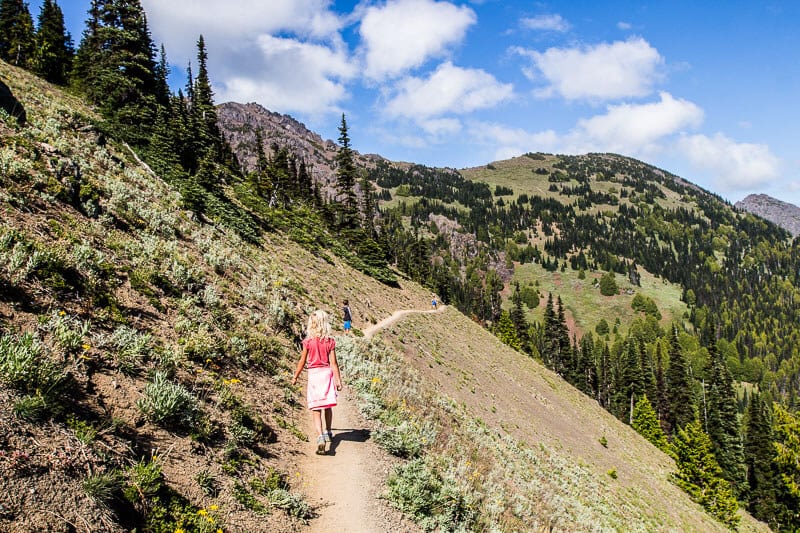
Rob recommended the Klahhane Ridge Trail as one of his favorite Olympic National Park things to do.
The full loop trail was going to be 5 miles round trip and steep for the last section of it, so we decided to walk as far as we could and then turn around.
I stupidly had done a tough barre workout class two days before, so my legs were a mess.
I can’t say for sure whether this was the reason I found this quite a difficult trail. Knowing my hiking skill level, this shouldn’t have made me feel as bad as it did.
The ranger at the Olympic National Park Visitor Center told us that it was an A+ leisurely walk through the Sound of Music scenery. He was spot on about the A+ Sound of Music scenery, but I’m not too sold on the leisurely walk thing.
But again, it could have just been my legs.
It wasn’t as flat as we were expecting, most of it was a gentle elevation gain, with a few more steep up-and-down sections.
The kids thought it was hard too but they were in more of a complaining mode than usual, which was also one of the decisions we decided to skip the last very steep switch-back climb up to Klahhane Ridge and turned around.
It was a hard walk out for me as my legs progressively got sorer and slower.
Usually, I am the one miles ahead of anyone else in the group, it was an unusual feeling to not be able to walk fast and fall behind no matter how hard I tried.
Would I still recommend the Klahhane Ridge Trail in Olympic National Park? Absolutely. Just don’t do any barre classes before it.
I mean, look at the views – simply stunning.
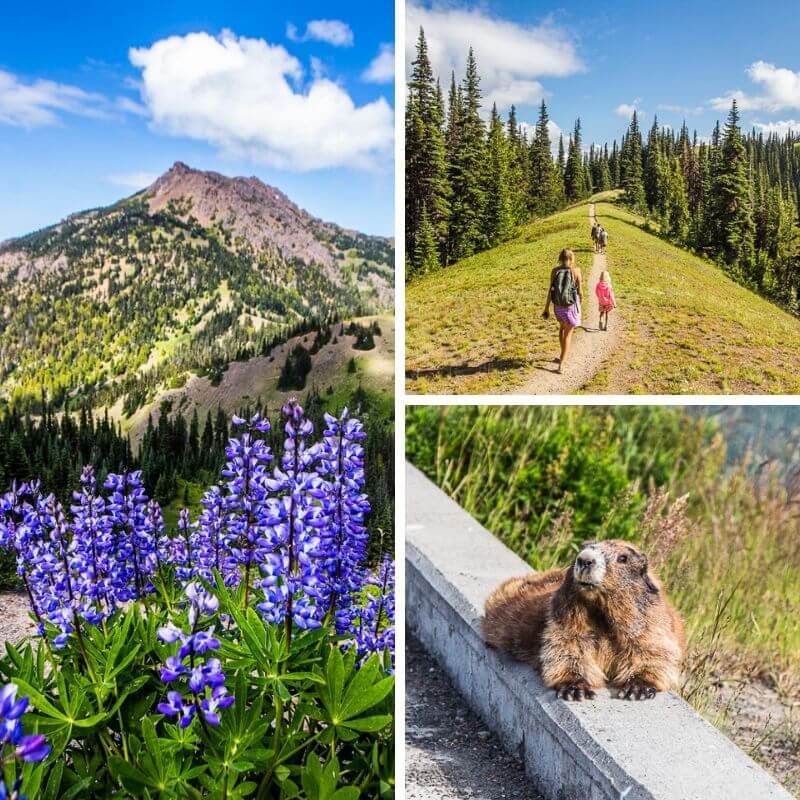
And we saw plenty of deer and heard the high-pitched whistle of an Olympic marmot at the end and then saw one sunning himself on the side of the road.
He was owning the joint!
The Olympic marmot can only be found on the Olympic Peninsula and are so cool I hope you see one.
Some other animals in the national park you may encounter are Mountain Lions, Mountain Goats, Black Bears, and Roosevelt Elk. Don’t worry, there are no Grizzly Bears here and it’s said the Black Bears are small, but you still want to keep your distance if you see one.
3. Visit the Lakes in Olympic National Park
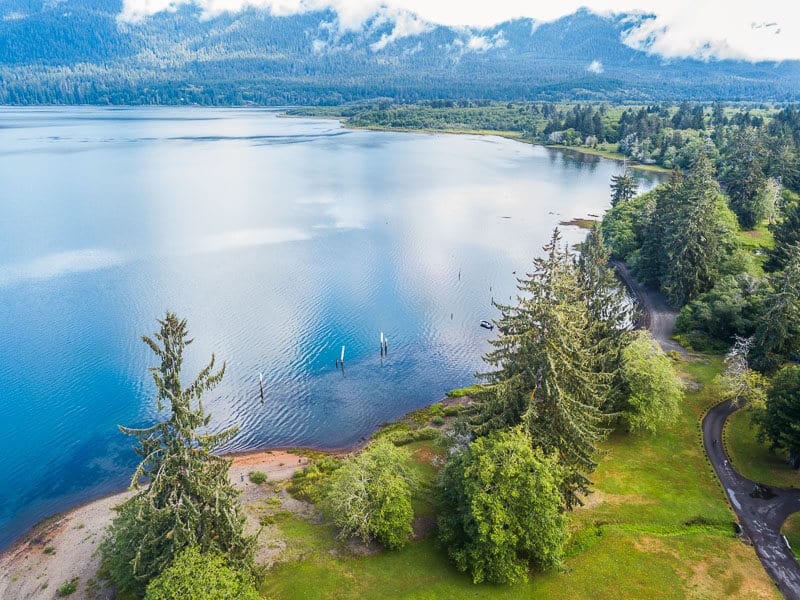
If you want to experience the serenity and calm water activities in the Olympic Park Washington, then escape to its striking alpine and sub-alpine lakes of all shapes, sizes, and colors.
From Lake Crescent to Lake Quinault, from Hoh Lake to Heart Lake, the Olympic Peninsula has no shortage of beautiful bodies of water.
There are over 650 lakes and wetlands in the park.
300 of them are high mountain lakes and only accessible only in summer and early fall for those with an adventurous spirit, a love for steep climbs, and primitive wilderness experiences.
Lake Crescent
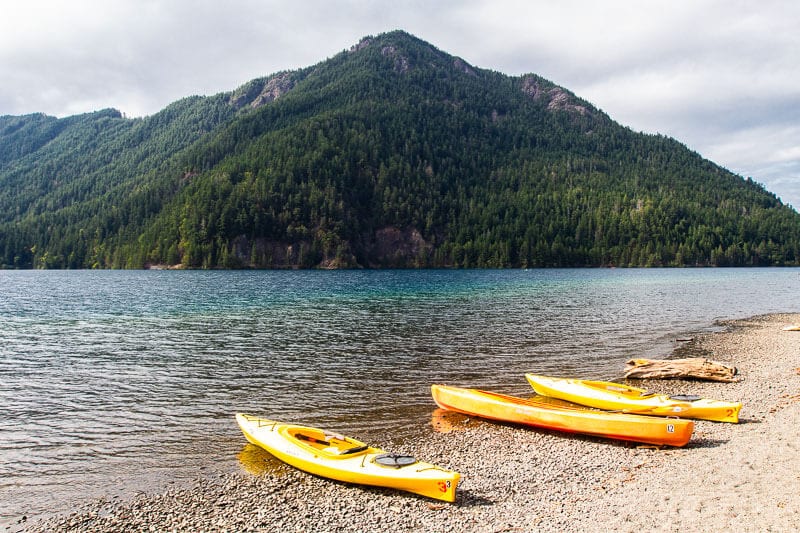
A 624 ft. deep shimmering glacier-carved jewel, Lake Crescent is the second largest of the lakes in Olympic National Park.
It lies in the northern part of the park, 18 miles west of Port Angeles.
This 12-mile-long sapphire-colored lake sparkles, and it was here, at Lake Crescent Lodge (formerly Singer’s Tavern) that President Franklin Roosevelt decided to authorize the surrounding wilderness as a national park.
I can understand why!
Lake Crescent Lodge is seriously charming. If you do nothing else, be sure to grab a local drink and head out to sit on one of the Adirondack-style beach chairs to enjoy the view.
It’s a fantastic way to end your time visiting Olympic National Park.
There are several hiking trails in the surrounding mountains, including the Mount Storm King hike which gives you incredible views of the lake, as well as lowland forest (see Marymere Falls in the Forest section below).
Not up for a hike?
You can hire boats and kayaks from Lake Crescent Lodge to enjoy water activities – serene swimming can be one of those!
There are plenty of picnic spots in the region as well.
Lake Quinault
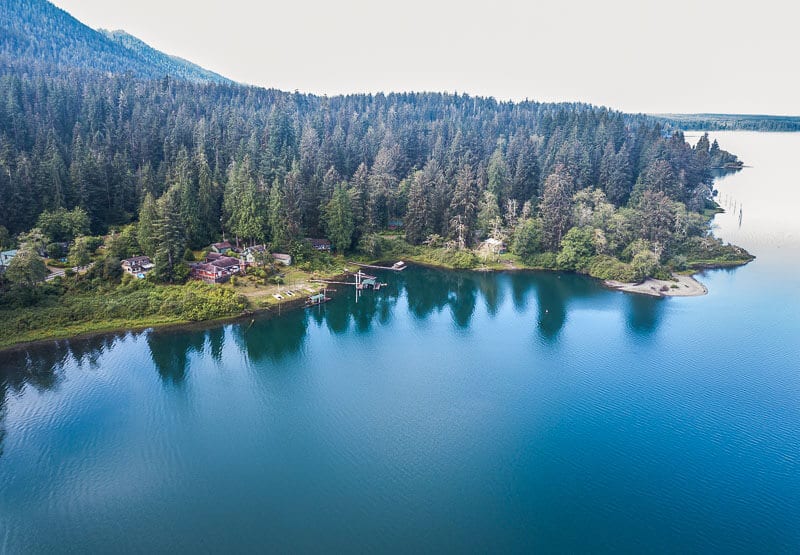
On the southwest edge of the park lies the deep blue glacial waters of Lake Quinault.
You can come here for lakeside summer fun including kayaking, stand-up paddle boarding, and miles of trails through lush rainforest groves and 6 champion conifer trees!
These trees are recognized by the National Forestry Association as the largest living specimens of their species.
It’s a great base to explore the rainforest and coastal regions of the Olympic National Park and offers a relaxing family vacation.
Lake Quinault Lodge is a stunning historic lodge on the lakefront. It’s a perfect place to enjoy a chardonnay with a view while the kids play on the expansive grass out front.
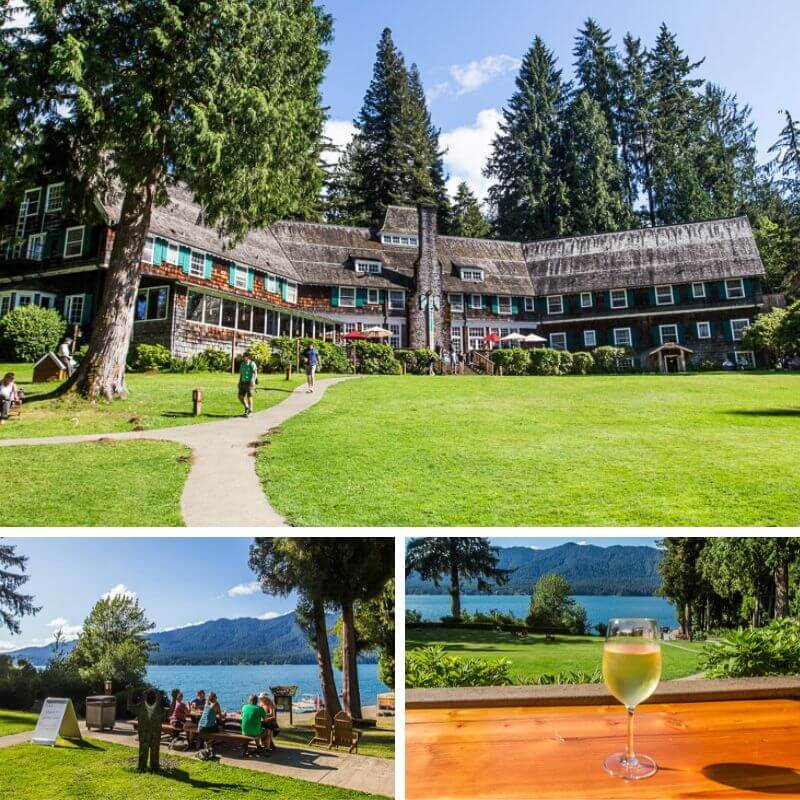
We camped down the road but popped in here after our hike through the rainforest.
One other worthy stop while at Lake Quinault is the Salmon House Restaurant. As the name suggests, you’ll find plenty of local salmon choices.
It was perfectly cooked melt-in-your-mouth salmon. I went for the house special – Dill Salmon.
Lake Quinault’s north shore is in Olympic National Park while the south shore is managed by the forest service.
If you have an Annual pass you’ll be covered for fees to the South Shore area. Your fee for the National Park does not extend to this region.
4. Explore the Lowland Old Growth Forests
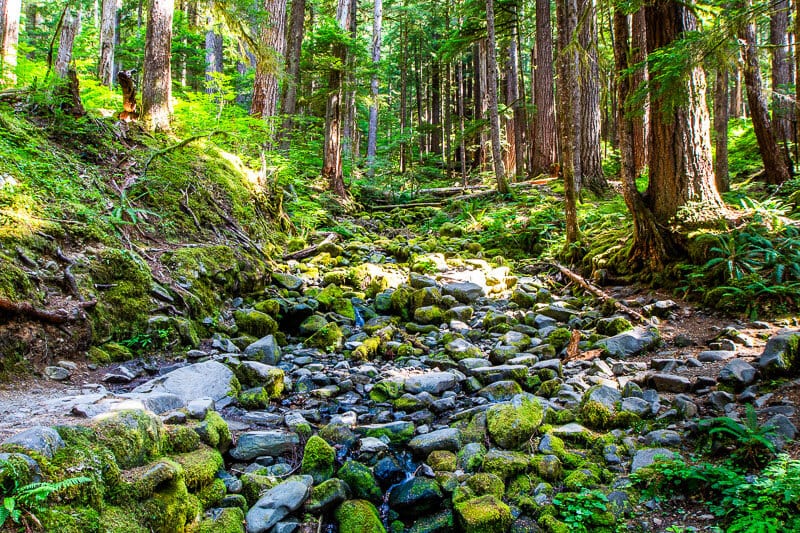
You will not be crazy for thinking that the following trails are rainforest trails. They are in fact lowland forests.
It took me some research to figure out what the difference was because I felt for sure I was walking through a temperate rainforest on the Marymere Falls, and especially the Soleduck Falls trail.
It’s indicative of the rain that falls in this region, as these trails were still incredibly moist and filled with cedar and Sitka trees.
However, the biggest distinction between old-growth lowland forests and temperate rainforests is lower rainfall. As the Sul Doc Valley is further away from the coast this makes sense.
The lowland old-growth forests have Douglas fir and western hemlock forests with trees that exceed 200 years old, and have a multi-layered canopy with abundant downed wood and standing dead trees.
Marymere Falls Trail
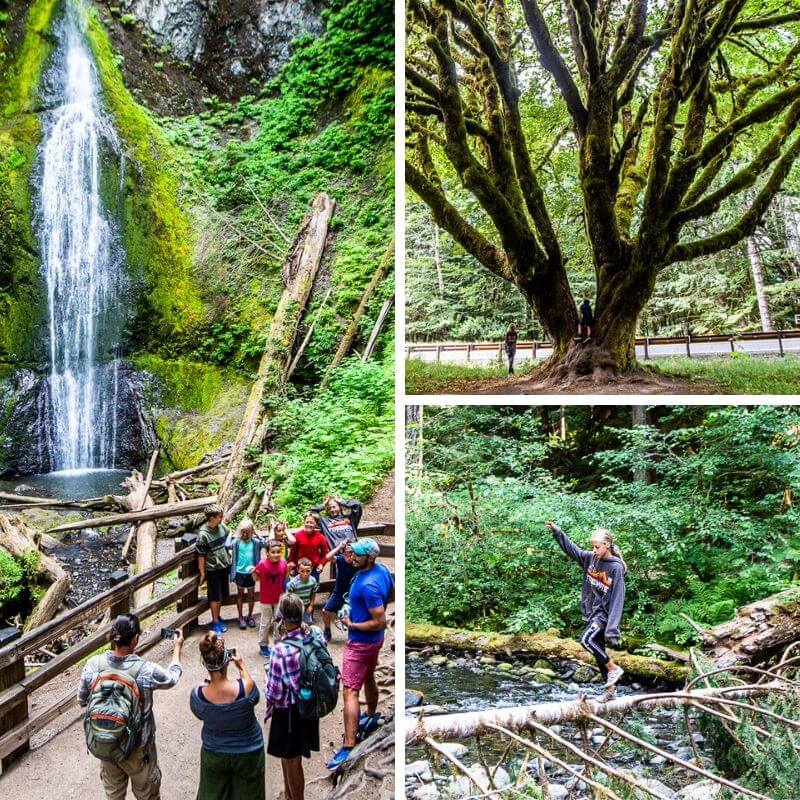
Enter a world of giant evergreens in a moss-laden forest.
This scenic 1.8-mile loop walk is one of the best hikes in Olympic National Park and will take you across two creeks and to two viewpoints of the beautiful 90 ft. high Marymere Falls.
The lower viewpoint will give you a closer experience to the falls directly opposite it.
This trail is one of the best things to do in Olympic National park with kids because of the waterfall, the creek to play in and the gorgeous tree at the beginning of the trail for playing on.
On the way back take the path that follows Barnes Creek downstream to the Lake Crescent Lodge.
This route passes through more old-growth forests and links into the family-friendly 0.5-mile Moments in Time Trail, which begins near the Storm King Ranger Station.
We took the path from here to the lodge after finishing Marymere, not realizing we could have taken a shortcut.
The Moments in Time Trail follows the shores of Lake Crescent through the ethereal woods and offers panels with more information on the region.
Sol Duc Falls Trail
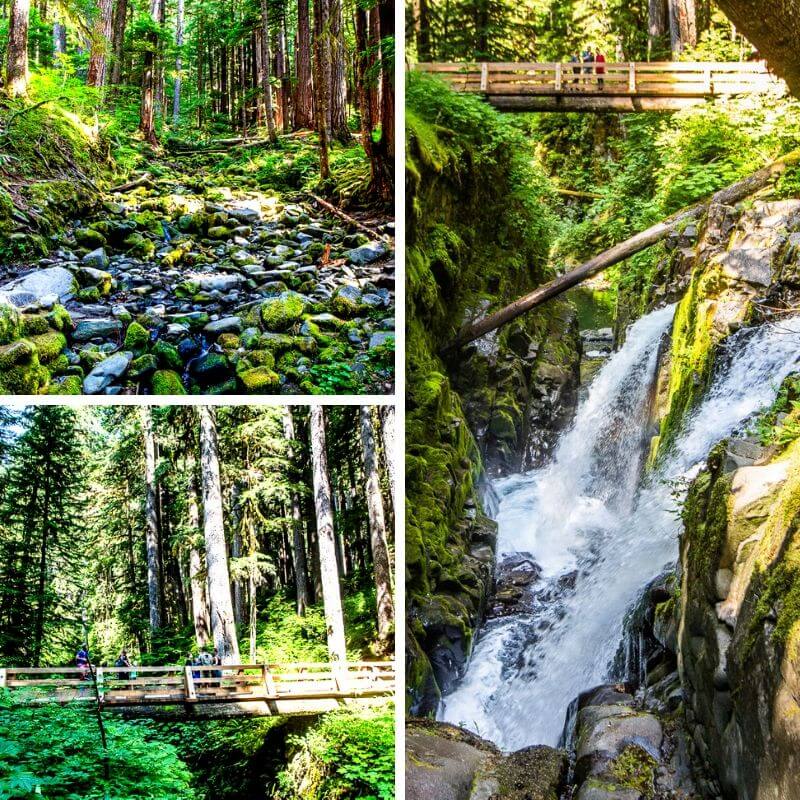
Sol Duc Falls is one of the most beautiful hikes and Olympic National Park waterfalls in the park!
The 1.6 mile return hike takes you along the Soleduck River and through a lush old-growth forest. It’s a mostly level trail with boardwalks making it a great trail for people of all ages and abilities.
The Sol Duc Falls is beautiful.
They are not the tallest or most powerful waterfalls, but the way they plummet 40 ft. into a narrow gorge via three separate parallel streams with dense green forest surrounding it is mesmerizing.
The separate streams regather in the canyon covered with moss and ferns and then roll on back downstream the rover under a rustic log bridge and through the forest.
Sol Doc Falls live up to their name, which is a Quillayute name that roughly translates into ‘sparkling waters.’
You can enjoy a front-row view of the mighty Soleduck Falls from multiple viewpoints above, below, and on level!
We took the short hike option this time, but the next time we visit Olympic National Park I want to take the 6-mile return from the Sol Duc Hot Springs Resort along Lovers Lane.
Land of the Ancients
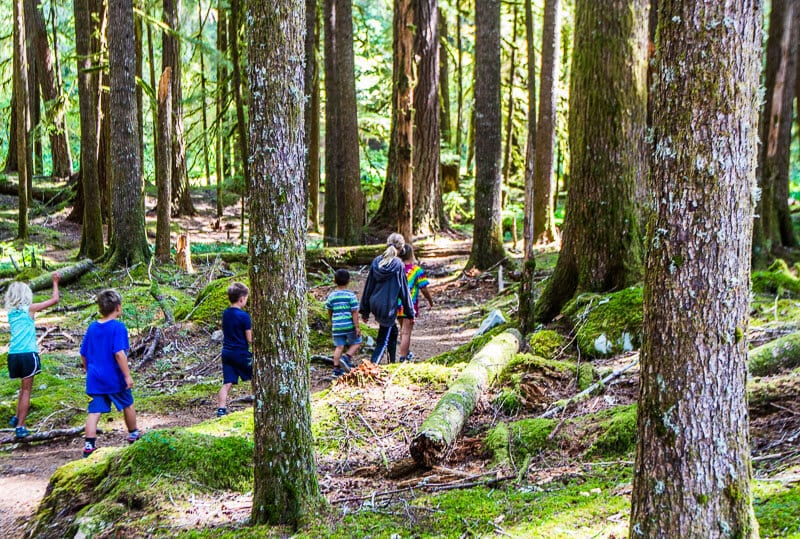
This is a great short trail along a boardwalk for some of the ways through a land of mosses, ferns, liverworts, and decaying matter.
The understory is abundant with huckleberries, elderberries, and a soft green carpet.
It’s magical and a hidden secret of the Olympic NP, shared with us by Rob!
It’s on the right-hand side as you drive to the Sol Duc Rainforest so keep an eye out for it on the right-hand side of the road. It’s just over nine miles from Highway 101.
5. Visit the Temperate Rainforests
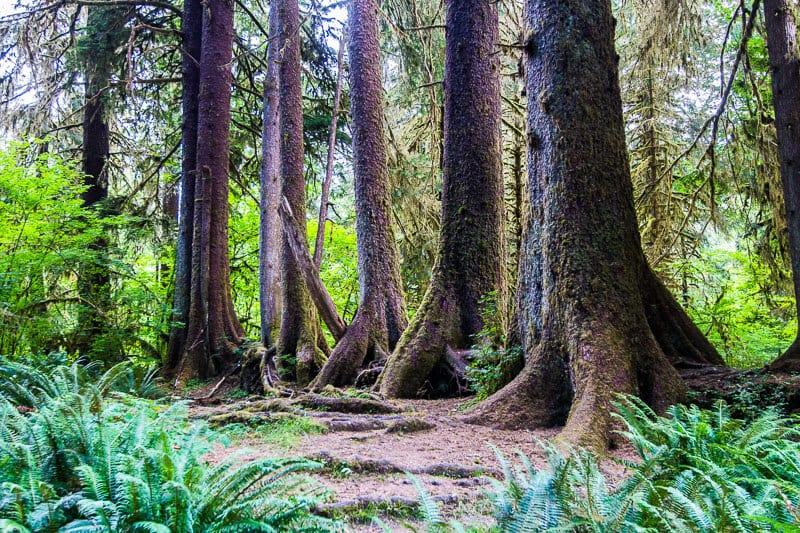
Run to the Olympic rainforest with its massive trees, lush vegetation, and Roosevelt elk.
Temperate rainforests grow along the coast, and in ocean-facing valleys so the west side of the park is where you’ll find one of the best places in the world to see a temperate rainforest.
Due to its 12-14 feet of rain per year and temperatures that stay between freezing and 80 the perfect mossy, lush ecosystem can grow here.
Several trees in Olympic National Park hold records for their size.
Hoh and Quinault are the most well-known Olympic forests. Bogachiel and Queets are two more.
Hoh Rainforest
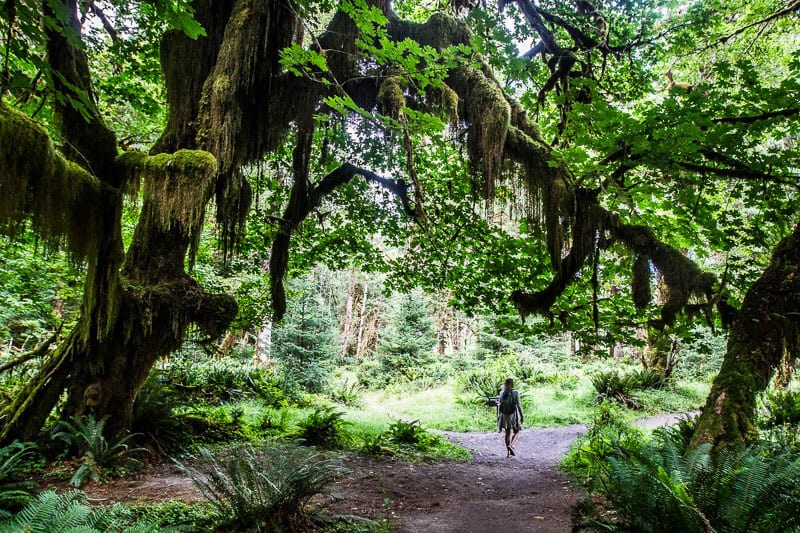
The Hoh Rainforest offers a different experience with trails taking you through the Virginia temperate rainforest.
It’s misty and ethereal and could be the setting of a hobbit tale.
Hoh Rainforest is a wonderland to explore with giant moss and ferns carpeting the floor and western hemlock, Douglas-fir and Sitka spruce trees, and moss-draped big leaf maples creating a canopy above.
It’s magical and timeless.
Roosevelt elk can often be seen lingering on riverbanks of the Hoh river trail at dawn and dusk. We did not see them but another deer beside us on the trail poking its head out of the bushes and scaring us.
Another popular trail in the rainforest is the Hall of Mosses trail, which is a lush, moss-covered trail that loops for 800 meters around the Hoh rainforest.
One thing I loved discovering in the Hoh Rainforest was the nurse logs, a characteristic of temperate rainforest. They are trees that have fallen down that now have a row of trees growing up on them in a row.
It was incredible.
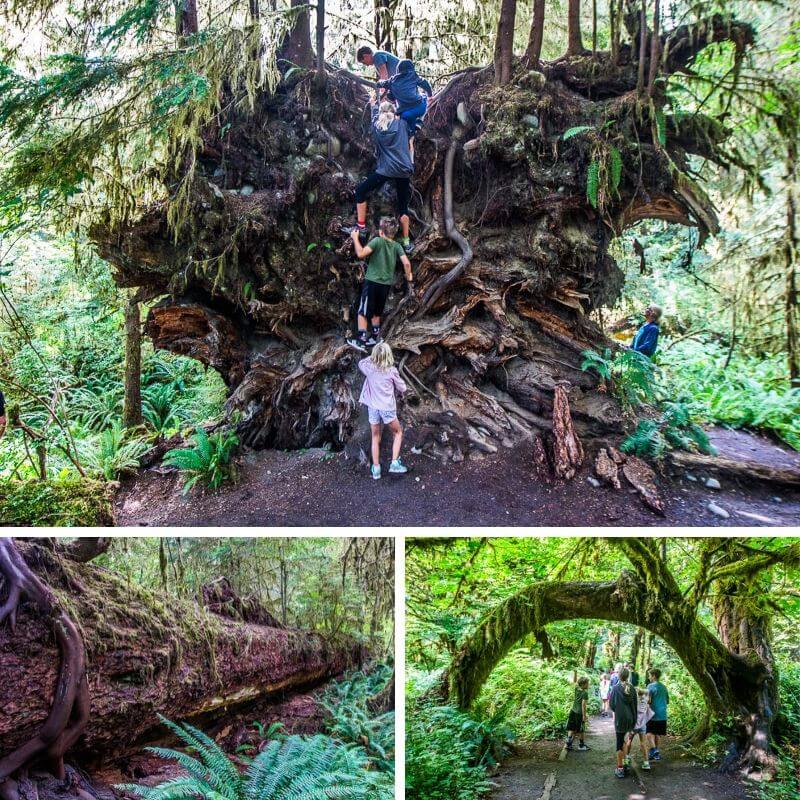
There are two of the easiest Olympic National Park hikes located in the Hoh Rainforest:
- the 1 mile Hall of Mosses
- and the 1.2 miles of Spruce Nature Trail
The Hoh Rain Forest is one of the finest remaining examples of temperate rainforests in the United States and is one of the park’s most popular things to do in Olympic National Park so be prepared for crowds and time your visit right.
Stop in at the Hoh rain forest Visitor Center for more tips.
Quinault Rain forest
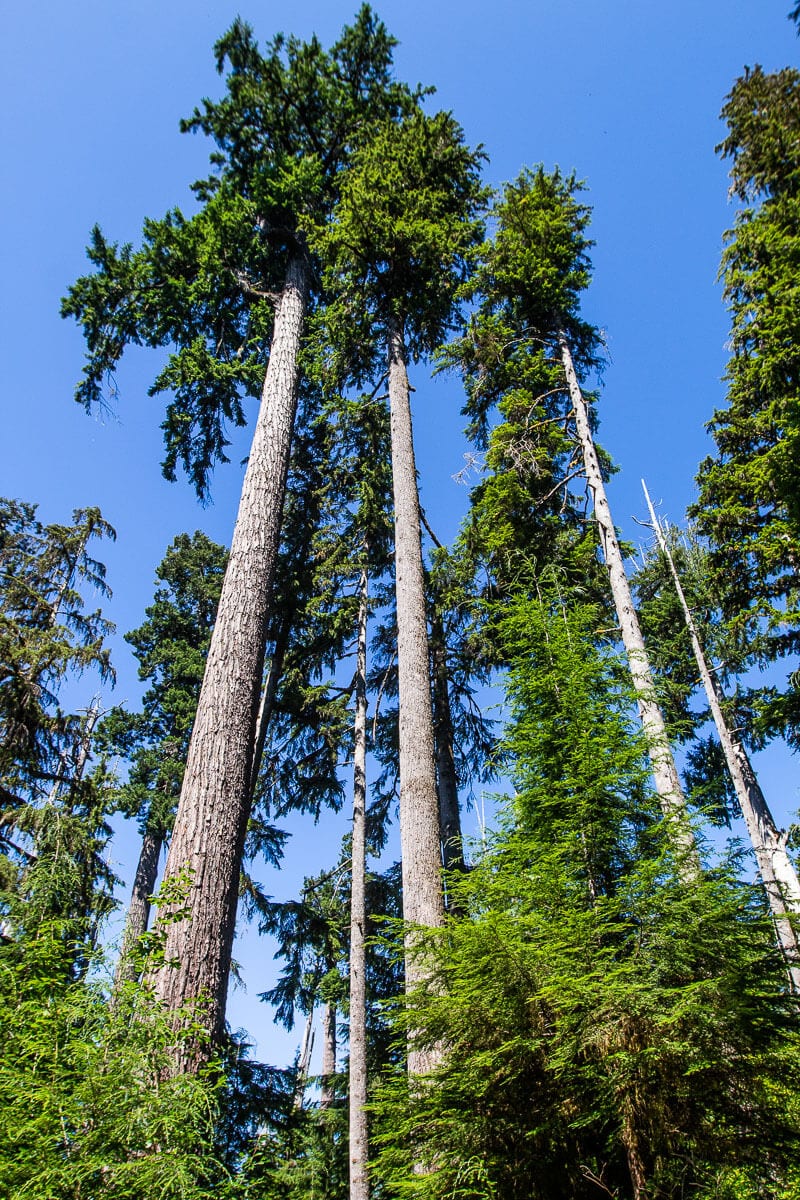
Further south of the Hoh Rainforest, on the shores of Lake Quinault, is the Quinault Rainforest.
Quinault Rain Forest is home to the world’s largest Sitka spruce tree which is more than 1,000 years old. It’s 191-feet-high with a 96-foot spread. The Big Spruce Trailhead is where you’ll find that.
The Quinault Big Cedar trail is 0.2 miles long with 80 feet gain in elevation.
Or stop at the Graves Creek trailhead and take the flat 1-mile Cascading Terraces loop through the forest along East Fork Quinault River at Graves Creek.
You’ll also find a few small waterfalls on some of the trails.
There are plenty of trails to choose from on the south side.
We jumped on a trail that started just behind our campsite at Rain Forest Resort Village and it looped around to bring us out near the Lake Lodge.
On that walk, we saw a couple of small waterfalls, but the kids were disappointed we took them on a hike to see such small waterfalls- kids who travel too much.
Falls Creek Loop is for those who like rushing streams and waterfalls. Trail of the Giants will show you plenty of giant Douglas fir trees.
6. Check out the Wilderness Coast
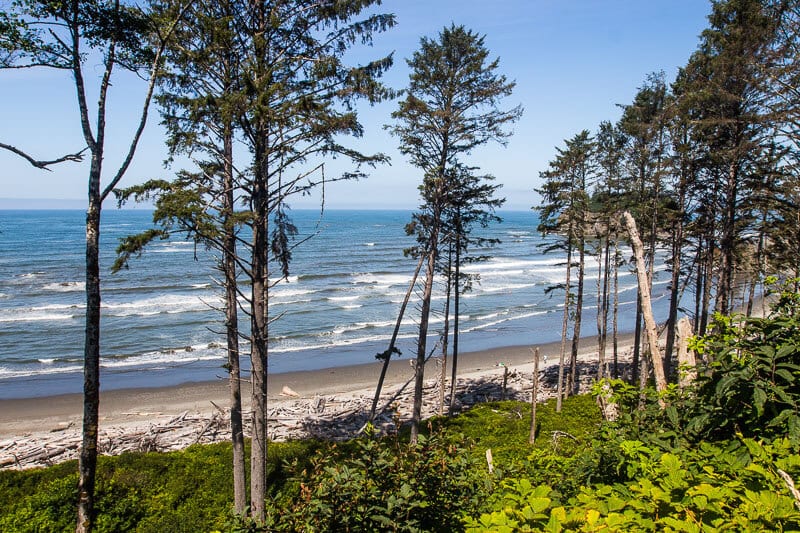
If you get tired of the shimmering lakes and old-growth forests, you can get a little wilder out on the Olympic National Park coastline.
I didn’t even know this area was part of the national park until we arrived and I saw the sign. I was even more impressed with the diversity the Olympic Peninsula offers.
From tide pools filled with colorful and intriguing creatures to arches and sea stacks or oodles of driftwood to play with on the beach, you’ll be entertained and in awe on the Olympic Peninsula coastline.
Olympic National Park protects over 73 miles of some of the most primitive natural coastline in the 48 contiguous United States.
Most of it can only be accessed on foot so prepare for some fun adventures on the Pacific Coastline.
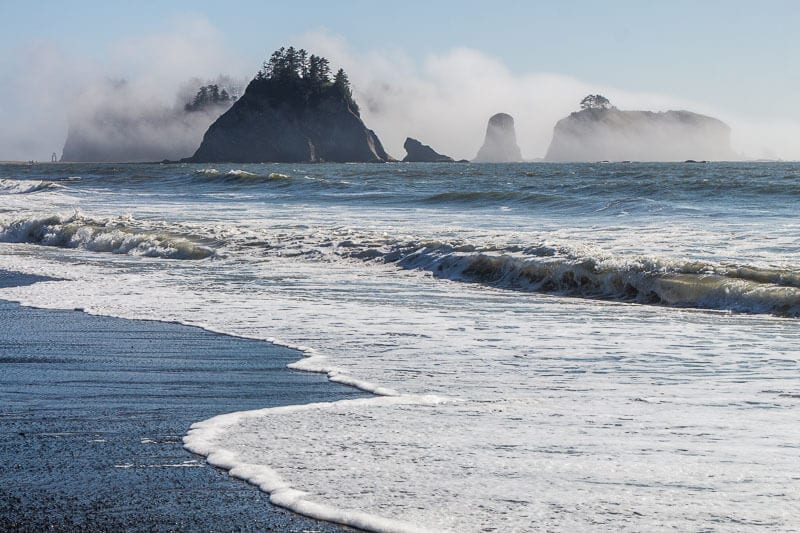
7. Check out The Olympic Beaches
But whilst beautiful, the wilderness coast can be treacherous.
I wouldn’t go swimming here. The water is cold and the surf treacherous. And when you see all those logs piled on the beaches, you can see just how powerful the ocean is here.
Many of these logs may remain underwater which adds to the dangers. You can also get stuck with tidal movements so be aware of these before playing on the beach.
Below are the three regions we visited that can be accessed by vehicle to take in some of the best beaches in Olympic National Park.
We explored this region while staying at the nearby Hoh Rainforest.
Kalaloch Beach
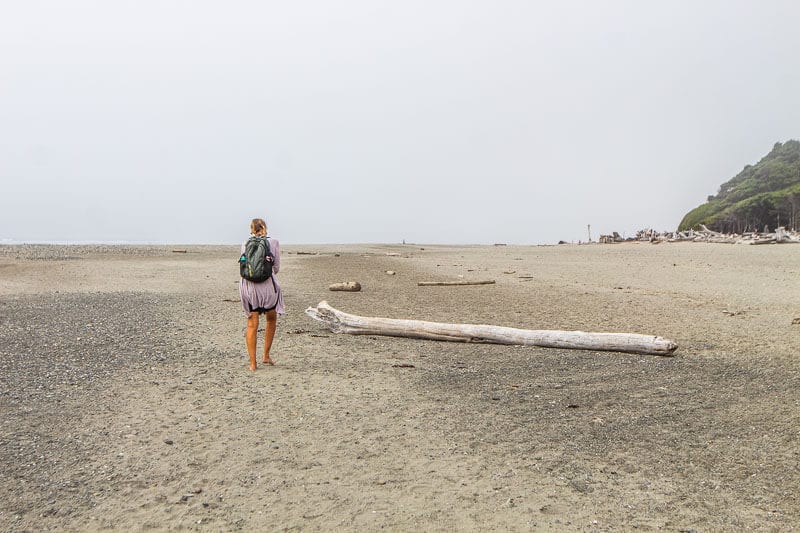
Kalaloch Beach is at the southern end of the Olympic Wilderness Coast and offers an expansive sandy beach and the popular Tree of Life.
I was a bit worried this Tree of Life may be a little let-down and not worth the 15-minute walk along the sandy beach.
The tree of life is a Sitka spruce tree that clings to the coastal bluff by winding thick roots, spanning the roof of a small cave.
Although erosion has taken away the life supply of the tree, it continues to thrive (even through wild storms) and provide an incredible site for people passing by.
Go for the walk, it is worth it.
Someone had created a giant maze on the sand which we all enjoyed walking our way through.
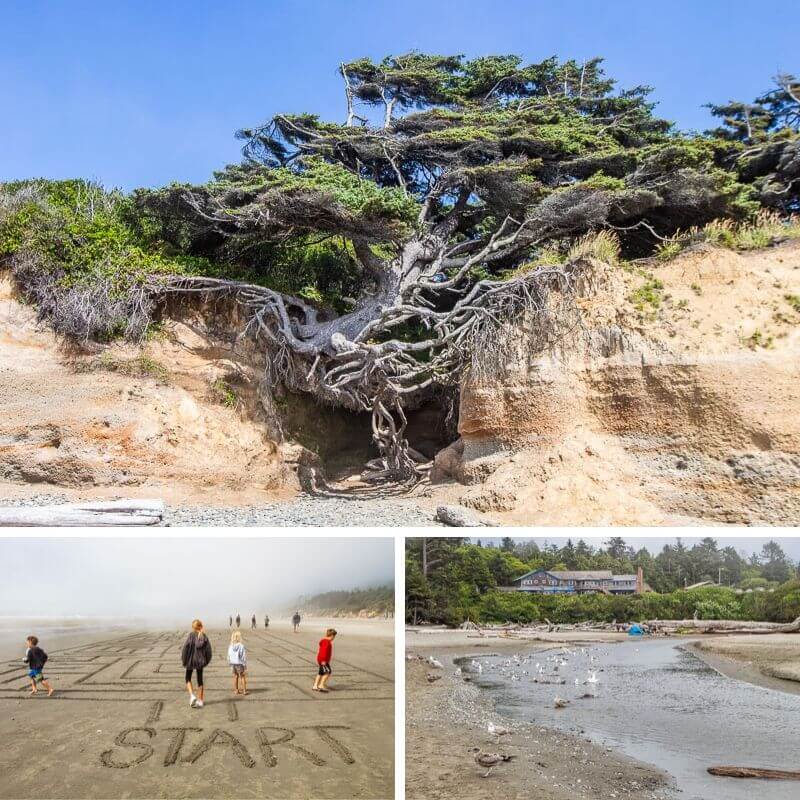
We had lunch at the Kalaloch Lodge which has wonderful views over the coastline.
This is meant to be one of the best beaches on the Washington Coast for storm watching. I could really see that with the intensity of those waves rolling in.
Ruby Beach
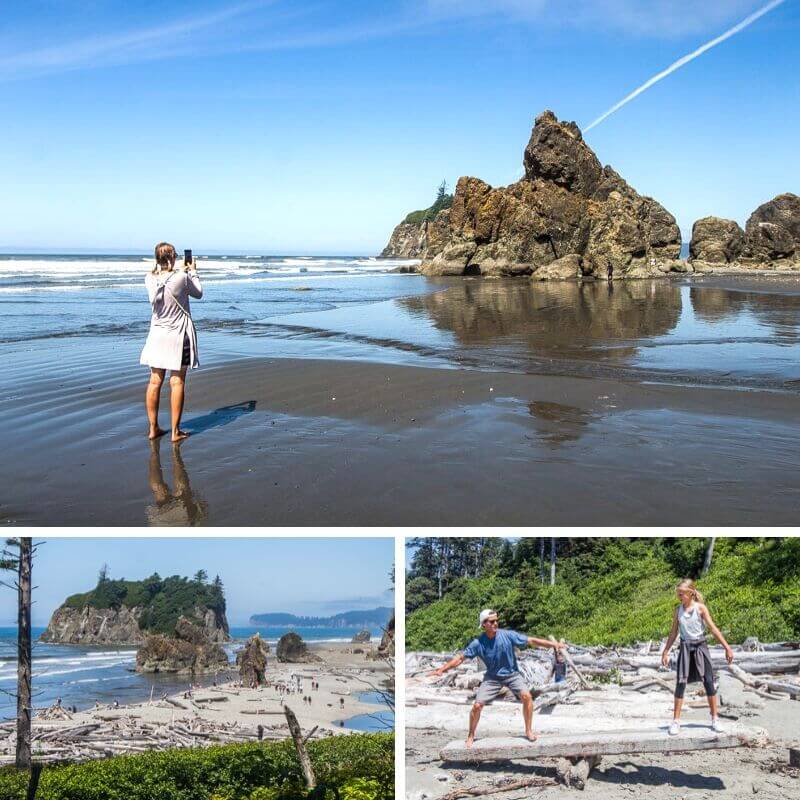
Out of the three beaches we explored on the Washington Coast, Ruby Beach was our favorite Olympic National park beach.
With stunning sea stacks, incredible coastal views, tide pools, eagles, otters and more, Ruby Beach is worth a visit.
If you can time it right, Ruby Beach has tide pools to explore as does Beach 4.
Pause for a moment on the way down to Ruby Beach as the views from the staircase are beautiful.
The entry over a pile of driftwood is a fun way to arrive and for the kids to build their fortresses. You can stay right there and play, or walk a little further north past the sea stacks for a quieter area to play.
We found seesaws and swings made from driftwood here. It was truly a kid’s paradise and it was hard to pull them away.
It is meant to have a spectacular sunset, so add this to your list of things to do in Olympic National Park.
Rialto Beach
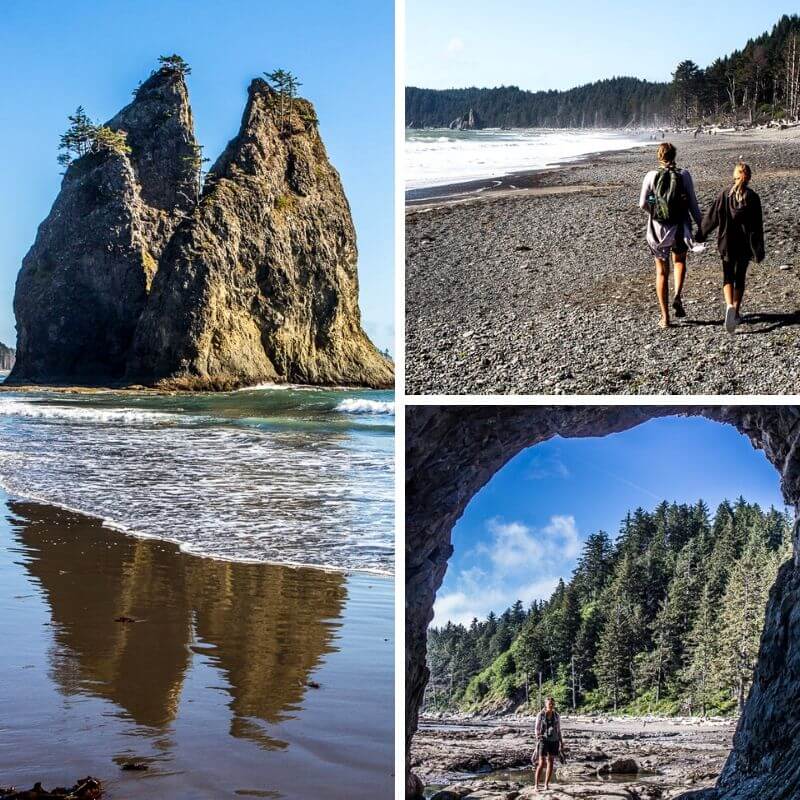
We were greeted with what I felt was a typical Washington coastal scene: a fog bank rolling in and shrouding the surrounding sea stacks.
A classic beach hike in Olympic Park, the 1.5-mile trek down Rialto Beach to Hole in the Wall.
Although it’s flat, I wouldn’t say it’s an easy walk as you’ll be walking on soft sand and large pebbles. With its sea stacks and rugged scenery, it’s beautiful and interesting.
Hole-in-the-wall is a sea-carved arch that provides a window to the rugged Washington sea stack-filled coastal scenery.
To get the perspective of the sea stack directly in the middle of the “hole”, cross through the hole (during low tide, of course) and walk about 100 yards away to find the right perspective for you.
Be sure that you are aware of the tide times as you will not be able ta access the hole in the wall when the tide is in.
Raito Beach is the jumping-off point for wilderness hikes going north.
You will pass through Forks as you drive into Rialto Beach.
In case you haven’t heard, Forks is the setting for the Twilight series and so a popular place for vampire lovers.
Olympic National Park is included in our best USA road trip ideas list!
Watch our Video of the Olympic National Park
Where to Stay in Olympic National Park
Now you know what to do in Olympic National Park, it’s time to start planning where to stay in Olympic NP. Here are some suggestions for some great accommodation.
Lake Crescent Lodge
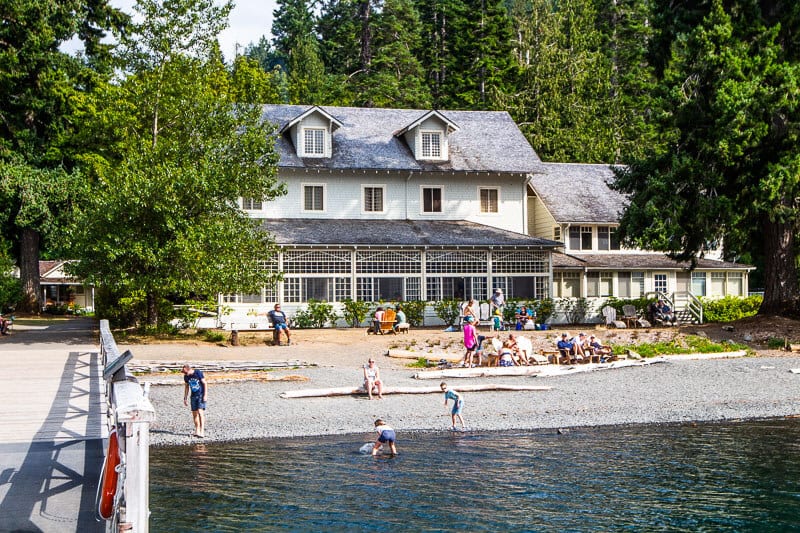
This historic lodge on the shores of Lake Crescent was built in 1915 and is one of the best places to stay in Olympic National Park for exploring the northern section of the park.
Its setting among the giant fir and hemlock trees is beautiful and the area exudes timeless elegance.
The lobby with its stone fireplace and sun porch is warm and inviting. There’s a wide range of rooms. My pick would be one of the National Register of Historic Places-listed fireplace cabins.
Lake Quinault Lodge
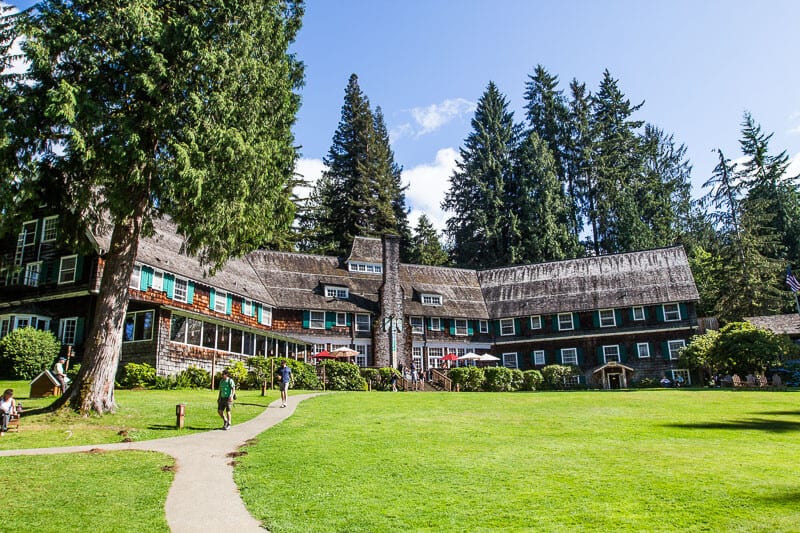
Lake Quinault Lodge would be an ideal base to explore the rainforest and coastal areas of the Olympic National Park.
It would offer respite and serenity after a day of hiking and exploring.
They offer accommodation within the lodge as well as several cabins and buildings on the main ground that range in amenities from fireplaces to lakeside views.
There’s also a restaurant, indoor heated pool and sauna, and recreation room.
The Lake Quinault Lodge is open year-round and offers guided boat tours, boat, and paddle boat rentals, and guided driving tours of the Quinault Rainforest.
Hotels near Olympic National Park
We always start any hotel search with Booking.com.
We like using them because you can book a variety of accommodation types on one website – hotels, apartments, hostels, even holiday homes – and their website is easy to use!
The best thing about booking via Booking.com is the free cancellation on most rooms and a best-price guarantee.
You can book knowing you are getting a low rate, and have the freedom to cancel if your plans change.
Camping in Olympic National Park
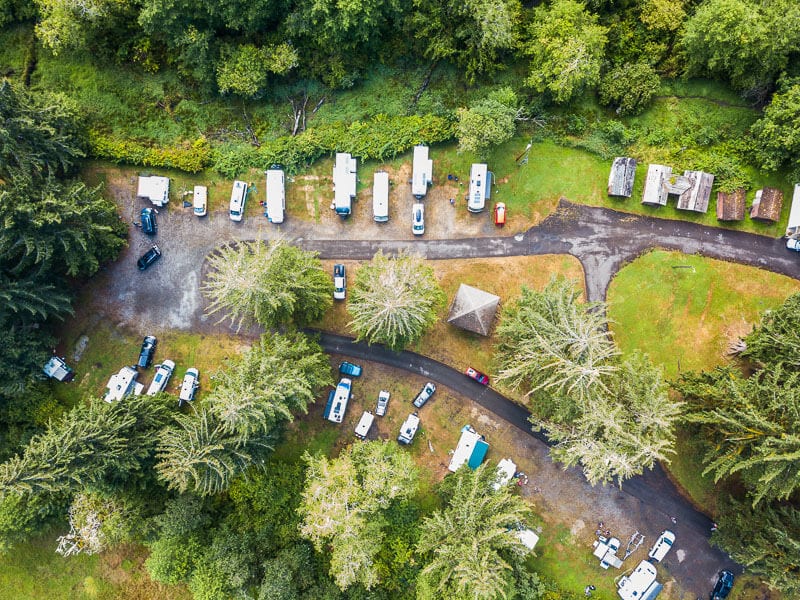
There are various campsites throughout Olympic National Park.
Kalaloch and Sol Duc are the only campgrounds that accept reservations in the summer. All other campgrounds are first-come, first-served.
Most campgrounds have RV spaces limited to 21 feet or shorter. Some campgrounds have lengths up to 35 feet. We just squeezed in at the Heart O’ the Hills campground.
Where we camped (with our 37 ft travel trailer):
- Hard Rain Cafe, Hoh Rainforest: This small café is just outside the entrance to Hoh Rainforest and has a small RV park attached. Water and electric included. They also have cheap burgers and breakfast options.
- Rainforest Resort Village, Lake Quinault: A pretty campsite on the shores of Lake Quinault, close to trails and Lake Quinault lodge. Easy walk to Salmon House Restaurant.
- Heart O’ the Hills Campground: This was a beautiful campground Surrounded by old growth forest in the northern section of the park as you enter the Hurricane Ridge area. It was only 10 minutes from downtown Port Angeles.
Learn more about the best campgrounds in Olympic National Park here.
You can also search for campgrounds using these free apps:
- Campendium – has thousands of places to camp, from swanky RV parks to free remote destinations. created by campers for campers.
- iOverlander – a database of places for overlanders and travelers. It includes camping, hotels, restaurants, mechanics, water, propane filling, and many other features.
Before You Go
So there you have it, those are the top things to do in Olympic National Park and how to plan your visit. As you can see, there is so much to see and explore, it’s going to be a true highlight of your trip.
Before you go, don’t forget to take out travel insurance. Not having travel insurance on any trip is not worth the risk. Anything can, will, and sometimes goes wrong.
What happens if:
- You need to cancel your trip unexpectedly
- You get sick or injured on your trip
- There is a natural disaster
- You lose important documents
Travel insurance is designed to cover unexpected medical emergencies and events such as trip cancellation, your personal effects, and other related losses incurred while traveling.
We at yTravel Blog are ambassadors of Allianz travel, who want you to travel happy!
This post is sponsored by our partner Allianz Travel (AGA Service Company) and we have received financial compensation as ambassadors.
More Washington State Travel Tips
Are you planning on visiting other parts of Washington? Then perhaps you might like these additional resources:
Tips on More National Parks in the USA
Are you planning to visit other national parks in the states? Check out our helpful guides below.
- Glacier: 15 unforgettable things to do in Glacier National Park
- Yosemite: 18 amazing things to do in Yosemite National Park
- Grand Canyon: 8 tips for planning a trip to the Grand Canyon
- Zion: 14 things to do in Zion National Park
- Yellowstone: 23 best things to do in Yellowstone NP
- Arches: 11 amazing things to do in Arches National Park
- Joshua Tree: 8 awesome things to do in Joshua Tree National Park
- Death Valley: 9 incredible things to do in Death Valley National Park
Pin Below To Save On Pinterest:
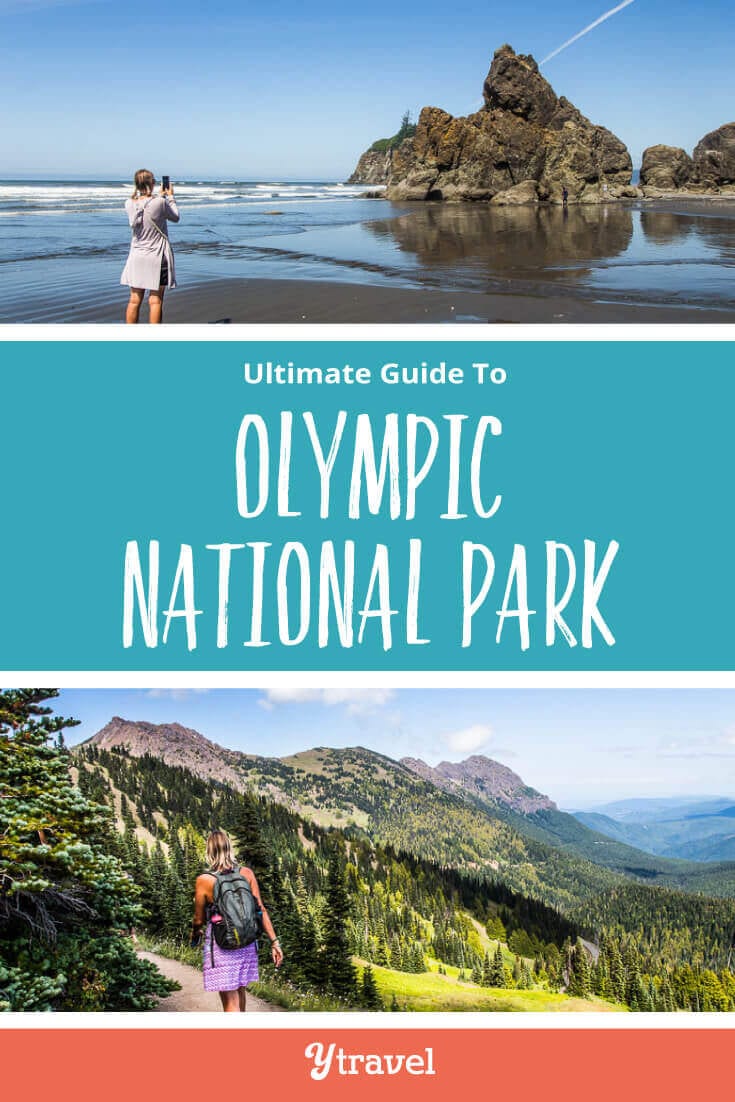
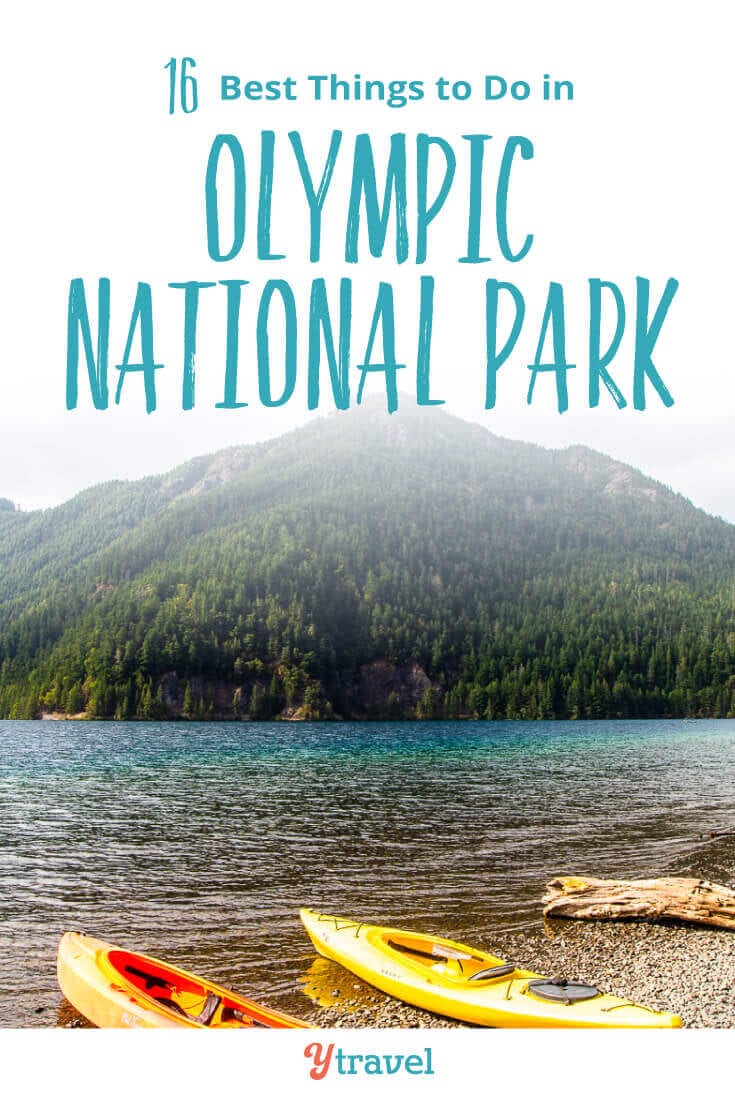

0 Comments